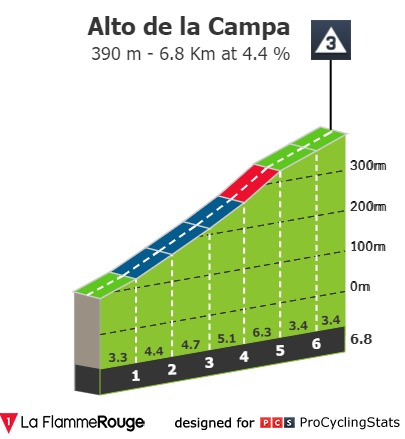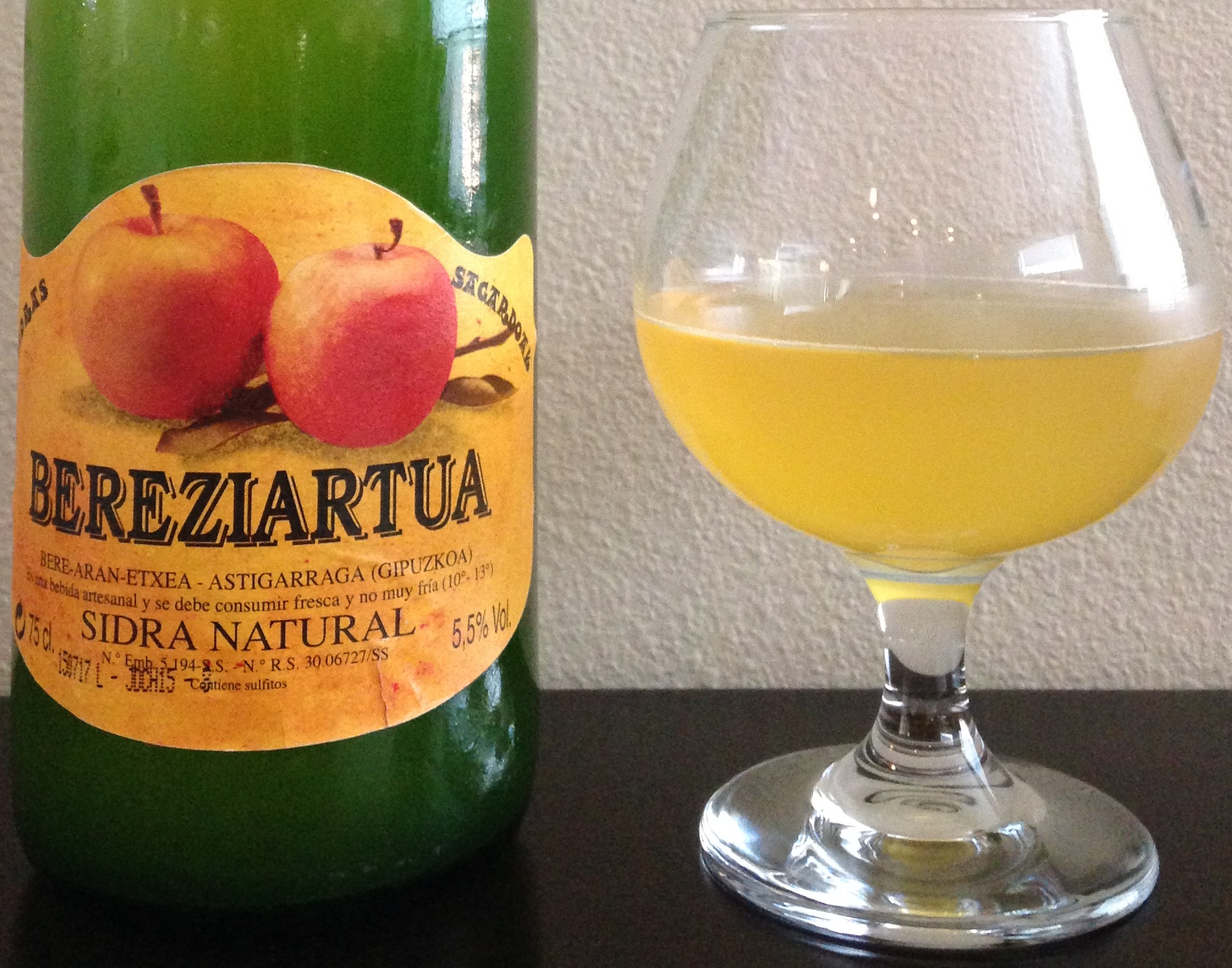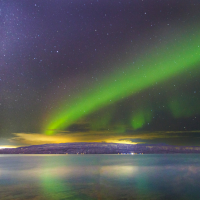La Vuelta 2020 : Stage 11: Villaviciosa > Alto de La Farrapona. Lagos de Somiedo - 170 km *Spoilers*

Saturday 31 October, 11.25 GMT.
The second weekend of La Vuelta is tailor made for climbers and given the race's modest third week, define the General Classification.
Both weekend stages will be covered live and in full on Eurosport/GCN.
Stage 11 runs from Villaviciosa to a summit finish at La Farrapona, while three huge and one small intermediate climbs will add to the fatigue. With the removal of the Col du Tourmalet stage, this is now the undisputed Queen stage, regardless of "that climb", tomorrow.

After four intermediate ascents the finish climb on La Farrapona is a monster of 16.5 kilometres with an exceptionally steep last quarter.
La Vuelta visited La Farrapona in 2014. The Asturian mountain lies in the Pico de Europa and back then it also served as finish climb to the Queen Stage. The race boiled down to Alberto Contador/Chris Froome clash with El Pistolero taking the spoils with a lead of 14 second.

From the gun the riders enter the Alto de la Campa, a warm-up climb of 8.3 kilometres at 4%.

Following 50 kilometres on the flat the real uphill action commences with still 170 kilometres left to race. So that’s a killer mountain every 40 kilometres or so. Firstly the riders ascend the Alto de la Colladona (7 kilometres at 6.5%)

A likely scenario is that Jumbo-Visma, Movistar and/or Ineos sets a high pace on the intermediate climbs to wear out the competition. The race continues over the Alto de la Cobertoria (9.8 kilometres at 9%)

The final intermediate climb is the highly regarded Puerto de San Lorenzo (10 kilometres at 8.6%).
It's final 6kms are climbed at a leg breaking average of 11%

There are 34 kilometrs to go at the top of the San Lorenzo. The riders drop down into the valley to continue straight onto the Alto de la Farrapona.
La Farrapone is a long climb – 16.5 kilometres -, but the average gradient of 6.2% is not very remarkable. That’s because the ascent is relatively easy until kilometre 11. It goes up at shallow gradients, but this changes in the last 5 kilometres. It happens gradually. First 1 kilometre at 8.5%, then another at 9.5%, and before you know it the climb continues with 3 kilometres at more than 11%. The climb evens out again in the last 500 metres.

The intermediate sprint – at the base of the Puerto de San Lorenzo – comes with time bonuses of 3, 2 and 1 seconds. A GC battle is next to certain on this demanding terrain.
Villaviciosa
Unprecedented departure
14.430 inhabitants
Villaviciosa encompasses numerous classic elements of Asturian municipalities that make up the Principality’s homogenous character. Its green fields, its connection to the sea through its estuary, its lovingly preserved nature and its carefully maintained streets make up two Historical Complexes. As is the case with The Netherlands, its history is closely linked with the life of Charles V. The Emperor first set foot on the peninsula at Tazones Port, which belongs to Villaviciosa, where his first stay on Spanish territory took place. It was the only locality able to host the King and his entourage.


Alto de La Farrapona. Lagos de Somiedo
2 stages of La Vuelta have had finales in the Alto de La Farrapona. Lagos de Somiedo.
1.125 inhabitants
When La Farrapona mountain pass was first climbed in 2011, it became a classic to which La Vuelta would periodically return. This long, demanding Asturian mountain pass, with numerous alternatives surrounding it, will test the GC candidates in preparation for the fearsome Alto de l’Angliru. Whoever wins this stage will add his name to Alberto Contador’s, who took a huge step in GC during this climb in 2014 to win his last Vuelta over the three he has under his belt.


Asturian Gastronomy.
Fabada asturiana

Cabrales matures in the caves. It is the blue cheese of the region. It can be made with any of the three milks, but always with the predominance of cow milk.

Perhaps it is still a bit unknown amongst the vast panorama of Spanish wine, due to the scare quantity of grapes that are processed in this area as well as the number of existing wineries. But it is important to know that the councils of South Western Asturias have been linked to wine for over ten centuries.
Cangas wine

Comments
-
Holy shit those climbs.1
-
Tough one then![Castle Donington Ladies FC - going up in '22]0
-
Hoping for decent weather for the riders but also for the scenery in this fantastic region.
Villavicosia is all about the cider rather than the wine. Cabral is great in a sauce.0 -
I just hope the race explodes from a bit further out than the final 200m.0
-
Just a picture choice tbh. Not a lot of good cider images. Here you go.bm5 said:Hoping for decent weather for the riders but also for the scenery in this fantastic region.
Villavicosia is all about the cider rather than the wine. Cabral is great in a sauce.
"Science is a tool for cheaters". An anonymous French PE teacher.0 -
Absolutely. Let's hope some of the GC teams and riders really stick it to Roglic from a distance, and hopefully he can't sit in and sprint from 200 m.phreak said:I just hope the race explodes from a bit further out than the final 200m.
0 -
The looming Angliru may impact the racing today.0
-
For that reason alone I would have liked to see the weekend stages raced in the opposite order.andyp said:The looming Angliru may impact the racing today.
As it is, I expect everyone to save it for the Angliru.
Not sure how they managed to give Covatilla, next weekend, especial status, when Cobertoria and San Lorenzo today only merit first category."Science is a tool for cheaters". An anonymous French PE teacher.0 -
That would've made sense.
If there is one potential chink in Roglic's armour, it's his ability on steep, long climbs. He's fairly unproven, I think the only one of the super steep, super long climbs he's done is the Mortirolo and Nibali and Carapaz took substantial time out of him on that. It wasn't a summit finish either, so they held back for the ride up to Ponte di Legno.0 -
I don't like the Angliru. It doesn't make for exciting racing as the riders just grind up at whatever speed they can manage.3
-
Interestingly, Carapaz rode the Vuelta in 2017, the last time it visited the Angliru, and he was 11th that day.0
-
I'm big on a bean stew with lumps of some sort of pig in as well.RichN95. said:I have to say I am liking these sausage and beans recipes (not joking, that's my bag). I'm doing yesterday's cod for lunch tomorrow.
I've also got a cod recipe that involves beans and chorizo. Not sure exactly where it comes from, but very simple. Chuck some butter beans, garlic, onions and tomatoes in a casserole with a bit of olive oil and some white wine and maybe some paprika (smoked if you fancy) and bung in the oven until it starts getting saucy. Wrap the cod in chorizo (best to do this beforehand, pack in cling film and leave in the fridge a couple of hours, helps the chorizo form to the fish) and quickly sear to seal it. Bung it on top of the beans for ten or fifteen minutes to finish and get the juices into the stew. The chorizo keeps the cod from drying out so it can be in the oven a little longer than you expect.Warning No formatter is installed for the format0 -
That's interesting. I like these sorts of one pot, multiple flavour dishes. Will try that cod one.No_Ta_Doctor said:
I'm big on a bean stew with lumps of some sort of pig in as well.RichN95. said:I have to say I am liking these sausage and beans recipes (not joking, that's my bag). I'm doing yesterday's cod for lunch tomorrow.
I've also got a cod recipe that involves beans and chorizo. Not sure exactly where it comes from, but very simple. Chuck some butter beans, garlic, onions and tomatoes in a casserole with a bit of olive oil and some white wine and maybe some paprika (smoked if you fancy) and bung in the oven until it starts getting saucy. Wrap the cod in chorizo (best to do this beforehand, pack in cling film and leave in the fridge a couple of hours, helps the chorizo form to the fish) and quickly sear to seal it. Bung it on top of the beans for ten or fifteen minutes to finish and get the juices into the stew. The chorizo keeps the cod from drying out so it can be in the oven a little longer than you expect.
1 -
Hey up, we have another strike at the start.
No idea what is up.
Froome in the thick of things.
Overheard is a discussion about yesterday's finish, a rule change and Roglic being given the red jersey."Science is a tool for cheaters". An anonymous French PE teacher.0 -
Seems to be the three second gap rule, which they apparently changed after the race. Froome not happy at all.blazing_saddles said:Hey up, we have another strike at the start.
No idea what is up.
Froome in the thick of things.
Overheard is a discussion about yesterday's finish, a rule change and Roglic being given the red jersey.Warning No formatter is installed for the format0 -
Yup.
Michael Woods says it wasn't fair as once again the UCI changed the rules on the spur of the moment.
He says even Jumbo are on board with the protest."Science is a tool for cheaters". An anonymous French PE teacher.0 -
Have the Eurosport player on in the house while pottering about doing Stuff. Ambient sound only just now, 158 to go; rather pleasant sans the Kirby constant wittering. Long may it etc0
-
I'll be watching the rugby on the TV with the Vuelta on a laptop.
The Vuelta on silent obs. 😉The above may be fact, or fiction, I may be serious, I may be jesting.
I am not sure. You have no chance.Veronese68 wrote:PB is the most sensible person on here.0 -
I had the Giro on reduced volume to save my ears from the incessant and repetitive gabbering of Hatch and his “this must be the ride of the year / decade / millennium etc” stuff0
-
The peloton is disintegrating at the start of the first major climb.
Martin goes up the road after Tim Wellies."Science is a tool for cheaters". An anonymous French PE teacher.0 -
I count 18 in that Martin led group0
-
Froome dropped on the first climb."Science is a tool for cheaters". An anonymous French PE teacher.0
-
I like Guillaume Martin. Earnt me loads of points in fantasty league for the Tour.Warning No formatter is installed for the format0
-
This is the "easy" one, right?0
-
Got back though.blazing_saddles said:Froome dropped on the first climb.
Warning No formatter is installed for the format0 -
Beautiful scenery again. Soler going for a long one, it won't take long before he's considered a threat and the pressure will come on the bunch. He's already gained about 50"1






